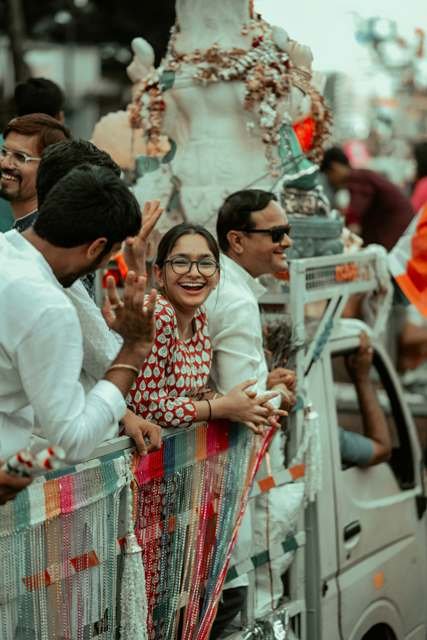Bhai Dooj – Special Bond Between Brothers and Sisters

Bhai Dooj, also known as Bhai Phota in Bengal, Bhai Tika in Nepal, and other regional names, is a Hindu festival that celebrates the special bond between brothers and sisters. It typically falls on the second day after Diwali, which is the festival of lights.
The word “Bhai” means brother, and “Dooj” means the second day after the new moon. On this day, sisters pray for the well-being and long life of their brothers by applying a tilak or tikka (a colored mark) on their foreheads and performing aarti (a ritual of waving lighted wicks in front of the brother’s face). In return, brothers give gifts to their sisters and vow to protect and support them.
The festival symbolizes the love and affection between siblings and reinforces the importance of family bonds in Hindu culture. It is a day when families come together to celebrate and strengthen the ties between brothers and sisters.
The rituals and customs associated with Bhai Dooj may vary across different regions of India, but the underlying theme of expressing love and gratitude towards siblings remains constant. It is a time for joy, feasting, and exchanging of gifts, marking the continuation of the festive spirit that begins with Diwali.
While the essence of the festival remains the same across India, different regions may have unique customs and traditions associated with Bhai Dooj. Here’s a brief overview of how Bhai Dooj is celebrated in different parts of India:
North India:
In North India, sisters perform aarti (a ritual of waving lighted wicks in front of their brother) and apply a tilak (vermilion mark) on their brother’s forehead.
Sisters may also prepare a special meal for their brothers.
West India:
In Maharashtra, the festival is known as Bhau Beej. Sisters invite their brothers for a meal and apply kumkum on their foreheads.
In Gujarat, it is celebrated with a similar spirit. Sisters perform aarti and apply tilak to their brothers.
South India:
In South India, the festival is known as Bhagini Hasta Bhojanam. Sisters invite their brothers for a meal and perform aarti.
In some regions, sisters draw intricate patterns or rangoli at the entrance to welcome their brothers.
East India:
In Bengal, the festival is known as Bhai Phota. Sisters draw elaborate and artistic alpana (rangoli) at the entrance of their homes.
Sisters perform aarti, apply a tilak, and pray for the well-being of their brothers. They also prepare a special dish called “bhog” for their brothers.
The legends associated with Bhai Dooj vary, but one common narrative is the story of Lord Krishna and his sister Subhadra. According to the legend, after killing the demon Narakasura, Lord Krishna visited his sister Subhadra, who welcomed him with aarti and tilak. This is believed to be the origin of the Bhai Dooj festival.
